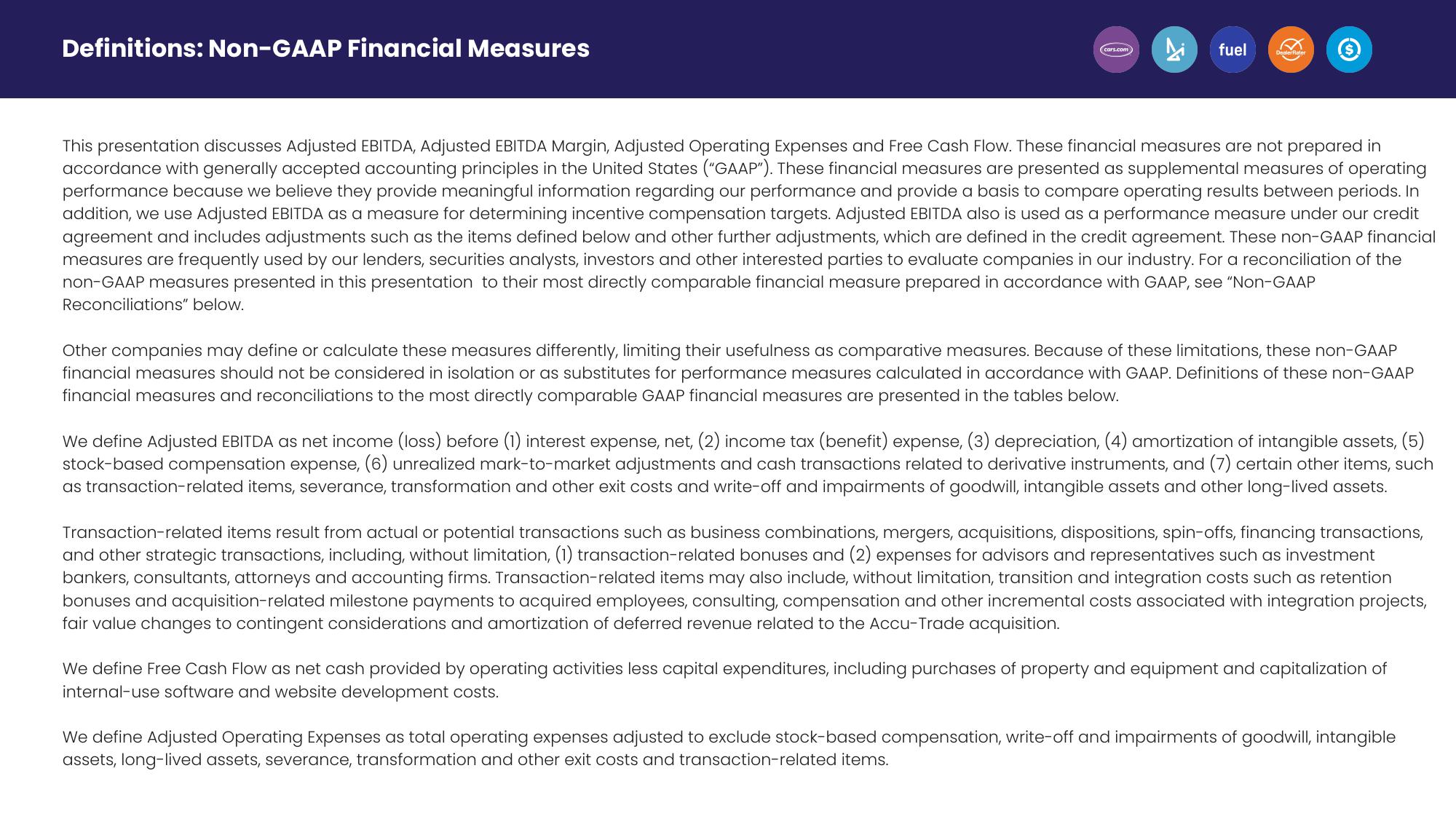Third Quarter 2022 Earnings
Definitions: Non-GAAP Financial Measures
cars.com
fuel
This presentation discusses Adjusted EBITDA, Adjusted EBITDA Margin, Adjusted Operating Expenses and Free Cash Flow. These financial measures are not prepared in
accordance with generally accepted accounting principles in the United States ("GAAP"). These financial measures are presented as supplemental measures of operating
performance because we believe they provide meaningful information regarding our performance and provide a basis to compare operating results between periods. In
addition, we use Adjusted EBITDA as a measure for determining incentive compensation targets. Adjusted EBITDA also is used as a performance measure under our credit
agreement and includes adjustments such as the items defined below and other further adjustments, which are defined in the credit agreement. These non-GAAP financial
measures are frequently used by our lenders, securities analysts, investors and other interested parties to evaluate companies in our industry. For a reconciliation of the
non-GAAP measures presented in this presentation to their most directly comparable financial measure prepared in accordance with GAAP, see "Non-GAAP
Reconciliations" below.
Other companies may define or calculate these measures differently, limiting their usefulness as comparative measures. Because of these limitations, these non-GAAP
financial measures should not be considered in isolation or as substitutes for performance measures calculated in accordance with GAAP. Definitions of these non-GAAP
financial measures and reconciliations to the most directly comparable GAAP financial measures are presented in the tables below.
We define Adjusted EBITDA as net income (loss) before (1) interest expense, net, (2) income tax (benefit) expense, (3) depreciation, (4) amortization of intangible assets, (5)
stock-based compensation expense, (6) unrealized mark-to-market adjustments and cash transactions related to derivative instruments, and (7) certain other items, such
as transaction-related items, severance, transformation and other exit costs and write-off and impairments of goodwill, intangible assets and other long-lived assets.
Transaction-related items result from actual or potential transactions such as business combinations, mergers, acquisitions, dispositions, spin-offs, financing transactions,
and other strategic transactions, including, without limitation, (1) transaction-related bonuses and (2) expenses for advisors and representatives such as investment
bankers, consultants, attorneys and accounting firms. Transaction-related items may also include, without limitation, transition and integration costs such as retention
bonuses and acquisition-related milestone payments to acquired employees, consulting, compensation and other incremental costs associated with integration projects,
fair value changes to contingent considerations and amortization of deferred revenue related to the Accu-Trade acquisition.
We define Free Cash Flow as net cash provided by operating activities less capital expenditures, including purchases of property and equipment and capitalization of
internal-use software and website development costs.
We define Adjusted Operating Expenses as total operating expenses adjusted to exclude stock-based compensation, write-off and impairments of goodwill, intangible
assets, long-lived assets, severance, transformation and other exit costs and transaction-related items.View entire presentation